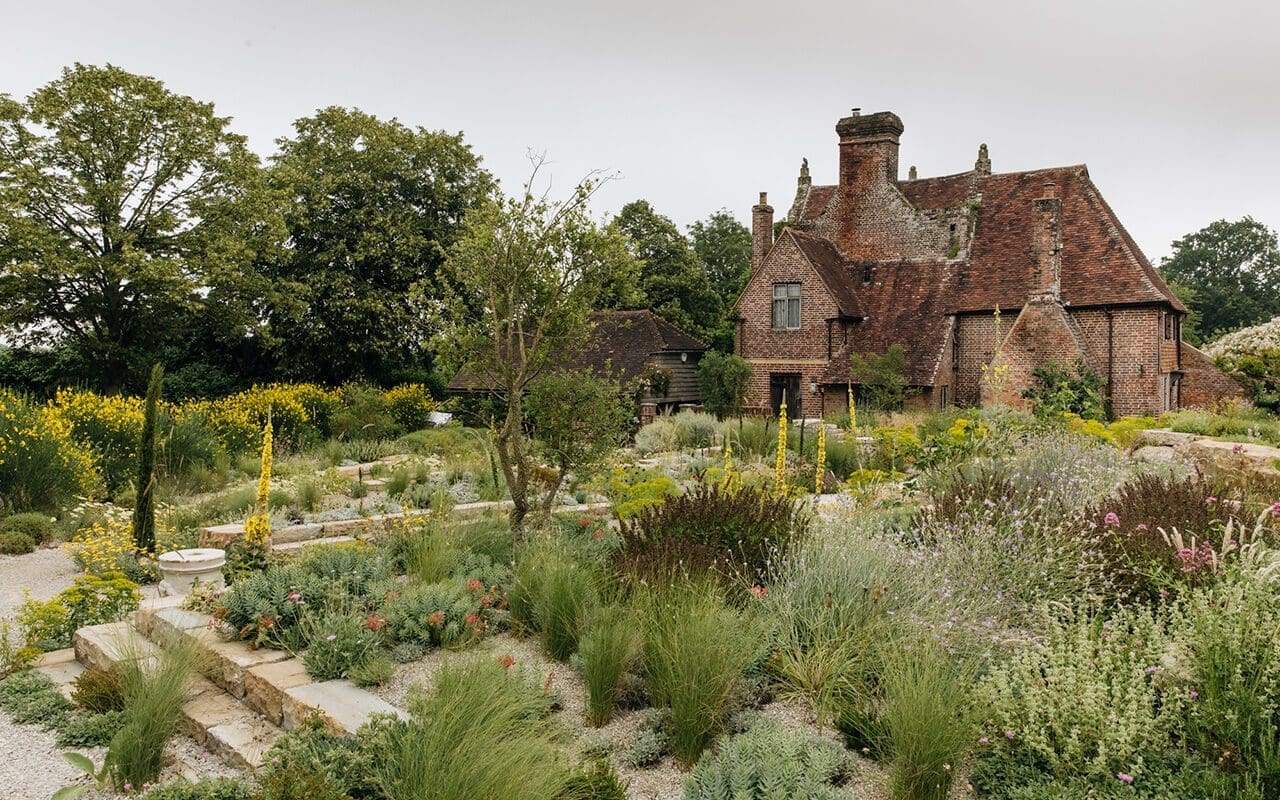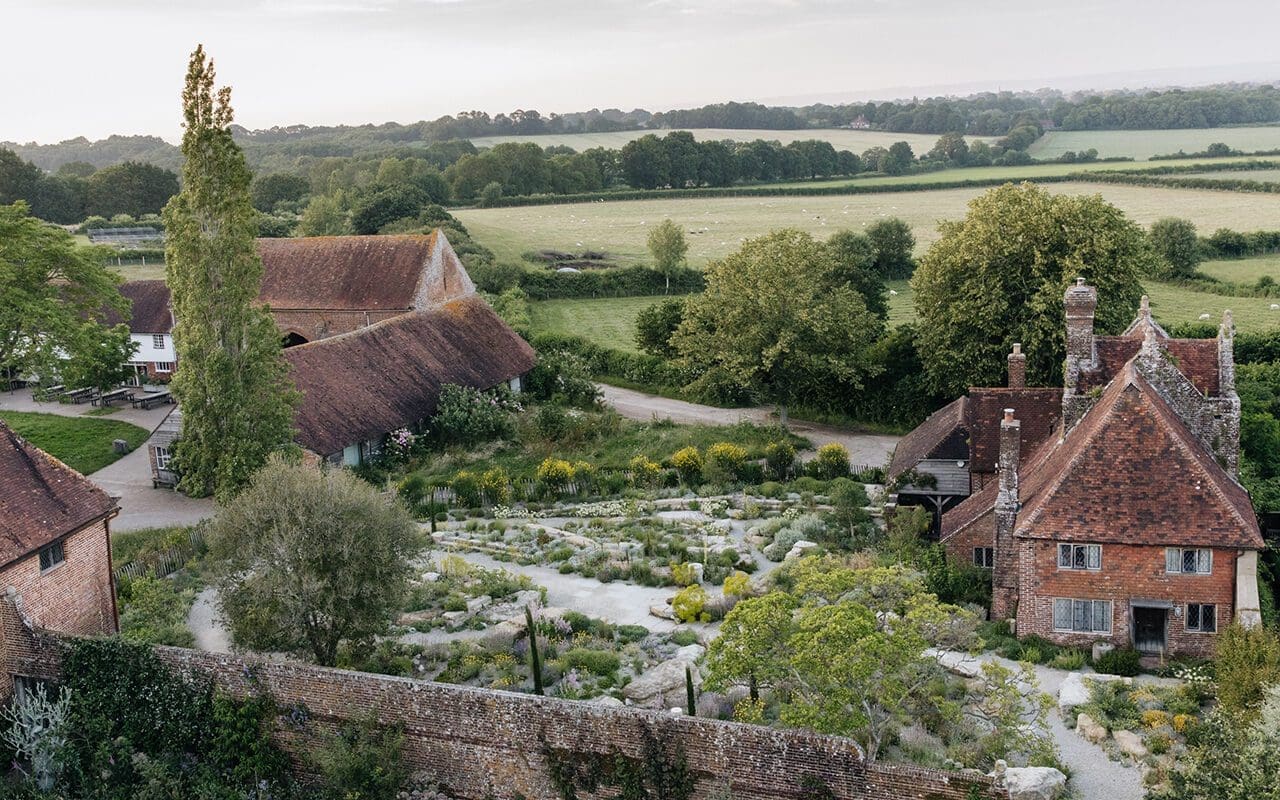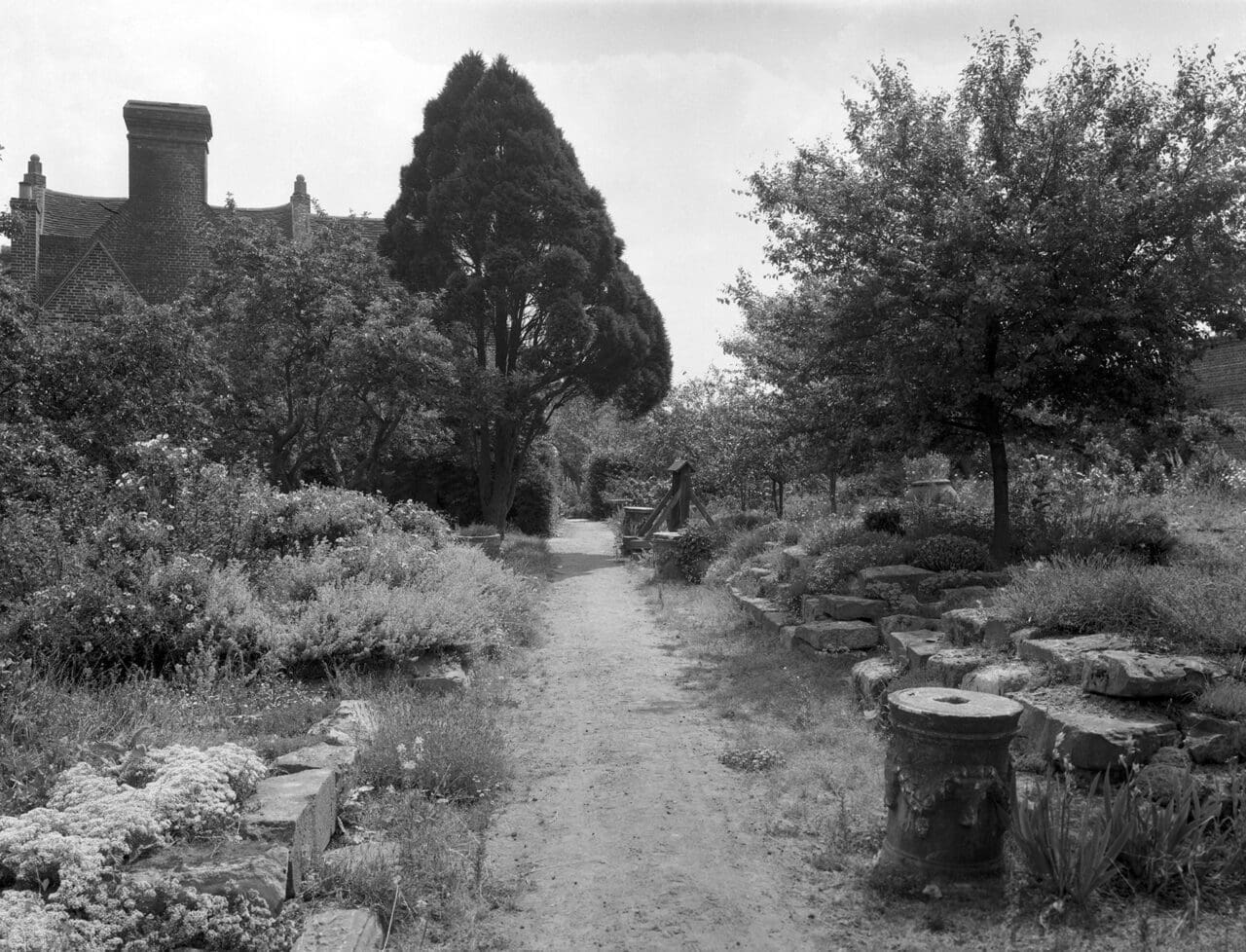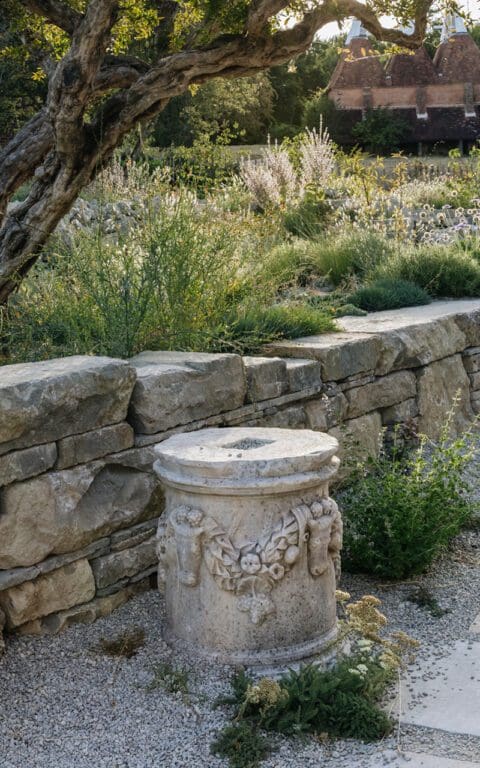
In 2014 I was appointed as Garden Advisor to Sissinghurst, which was then under the careful guiding hand of Head Gardener, Troy Scott-Smith. The role involved an annual walk round the gardens with Troy, acting as a sounding board for his plans to relax the garden and to steer it gently towards its original vision. Over time, and without the owners at the helm, the gardens had been managed to provide their very best for the swell of visitor numbers. I agreed they no longer resembled the gardens of Vita’s writings or her freedom of spirit.
Troy had spent hours immersing himself in Vita’s imaginings, hopes and plans for the gardens, and had written a manifesto that called for a return to a more relaxed and wild, romantic vision closer to Vita and her husband, Harold Nicolson’s, original intentions.
Every time I visited we skirted around Delos, a garden that had originally been built in response to a visit that Harold and Vita had made in 1935 to the ruins of the Greek island of this name in the Cyclades. The garden had been lost, planted in the wrong place, facing north on heavy Wealden clay. It was a place that had come to be more suited to the site and was now part woodland, part lawn with rose beds lining the boundary. The very name felt like an anomaly.
It was in 2018 that Troy asked me if I would work with him and his team to re-imagine the garden. It was daunting making changes to a garden as universally loved as Sissinghurst, but we set to and looked carefully into the history to understand why Harold and Vita had felt compelled to bring something of the ruined island back to Sissinghurst. Troy had sent two members of his team on a field trip to study the vegetation and record the mood of Delos. The time that I too have spent in Greece provided rich inspiration with regard to the planting. We worked carefully with the National Trust historians to test our ideas as they emerged and spent the best part of a year planning. Visiting a local quarry with Nigel Froggatt, the masterful craftsman who built the garden and taking time to mock up the walls so that they felt authentically of the island.

The design made some bold moves that perhaps Harold and Vita did not have the know-how to make at the time. We made light by editing the existing trees back to a Quercus coccifera from the original planting and harvested the sun by battering a number of terraced walls back into the sun to face south. The original axis was reworked to feel like the stepped ruins we had seen in photographs of the garden taken not long after it was made. The terraces that moved away from it became rougher to invoke the hillsides into which the ruins had fallen. We made the old well the centre of the garden, a communal meeting place as it would be in a Greek village and made a seating place amongst columns where Vita had imagined that the blue of the distance could conjure the sea.
I went on my own research trip to workshop the palette of Greek natives with Olivier Filippi at his nursery in the south of France. His knowledge and plant selection is superlative. Some plants were untested in this country, others entirely familiar. On returning to the UK I worked up the planting areas. Goat paths where the aromatic plants would brush your legs and shade-loving drought lovers that would sit happily in the shadow of Judas trees. A mature pomegranate forms a gateway from the White Garden. A fig and the rough twist of cork oaks will, in time, provide height and volume. Aromatic evergreens are already hugging the terraces and perfuming the garden on a hot day and the ephemerals, the annuals that make a Greek spring the spectacle it is, are already beginning to find their niches to make the garden feel lived-in.
Last week, over a year since my last visit for the final planting day in the week before the first lockdown, I returned for the official opening. The garden felt settled and possibly better for the enforced pause of the lockdown and Saffron Prentis, who has been in charge of the garden, has tended it beautifully. The volunteers who man the garden every day have been there to communicate the story behind it and its reimagining.
In 1953, Vita wrote of Delos, ‘This has not been a success so far, but perhaps someday it will come right.’ I know that the changes have not been liked by all who have seen the garden in the flesh or online, but when I returned last week with the planting already looking established after just 18 months, it was possible to see that Vita and Harold’s vision of a Grecian isle transported to the Kentish Weald is once again alive at Sissinghurst and coming right.
_._._._._._._._._._._._._._
When we first started work, Adam Nicolson, Vita and Harold’s grandson, was immensely helpful in facilitating our understanding of the deep-seated cultural motivations of both Harold and Vita to create this garden. At the opening last week he very kindly offered to write a piece giving his perspective on Delos, then and now and I am delighted to share it with you here.
Dan Pearson, Hillside, 8 July 2021

The official opening of the new Delos at Sissinghurst last week is only a beginning. The new cypresses will soon stretch and thicken, the new figs will sprawl and lounge across their neighbouring boulders and walls and the individual plants of Dianthus cruentus will spread and merge into rivers of deep pink, bee-happy colour. A long future awaits this garden, as something to take its place alongside the Purple Border and the White Garden as the brightest of stars in the Sissinghurst constellation.
It has been a long time coming. Throughout my childhood at Sissinghurst, we always knew that in the 1930s Vita and Harold had wanted to make a Greek garden in this most unpromising of clay-wet, north-facing and very very Kentish corners. They attempted it, assembling some of the Elizabethan stones they found lying there into stepped platforms that vaguely recalled temple foundations in the drought of the Aegean. But the soil was wrong, the site was wrong and over the years a series of efforts were made to redeem it. My father removed all those stones to make the foundations of his gazebo; a very American grove of birch-like magnolias was planted to preside over a carpet of scillas and chionodoxias through which a few peonies poked their heads; new brick paths were laid. Delos had essentially been lost.
It has now been found and in the richest possible way: the silhouette of a flowery garrigue billows up in front of big country rocks; rubble-terrace walls firm up into what might be the foundations of buildings along the central street of this forgotten city; the half columns of an abandoned temple stand on the slope above.
It is pure theatre, as it was always intended to be, entirely dependent on a big, hidden drainage system and an especially free-running soil, with plenty of grit and crushed brick to make the Mediterranean plants feel at home. Clay is nowhere to be seen.
There is one element that reaches further back into history than the dreams of the 1930s: three cylindrical Greek marble altars, originally carved in the 3rd or 4th century BC, decorated around their waists with swags of grape, pomegranate and myrtle suspended between garlanded bull-heads — boukrania—which now stand at key intervals along the central street of the garden. Perhaps almost unnoticed among the blaze of life and colour around them, these altars remain the core of the garden and its meaning. They are the reason it is called Delos, as they came originally from that famous island in the Cyclades, sacred to Apollo, and represent an element of the story that was undoubtedly close to Harold Nicolson’s heart.

His mother’s grandfather was Commodore William Gawen Rowan Hamilton, a naval commander in the first years of the nineteenth century, a heroic and romantic figure and passionate Philhellene, who spent the years from 1820 onwards in the eastern Mediterranean, winning the title of ‘Liberator of Greece’ by protecting the Greek rebels against the Turks and spending much of his private fortune in their cause. There is still a street in Athens named after him in gratitude.
From time to time during his cruises attacking pirates and fending off the Turk, he would land on an island or a piece of the Turkish-occupied mainland and quietly liberate an antiquity or two, sending them back to his liberal father-in-law in Ireland, Major-General Sir George Cockburn, a flamboyant antiquary who had made a collection of Greek statuary at Shanganagh, his castle outside Dublin.
These Delian altars arrived there in the late 1820s, dripping with Greek-loving, liberty-loving significance, and when in 1832 the British government promised in the Great Reform Bill to democratise the corrupt state of British politics, Sir George erected them in a column to Liberty outside his front door. They stood there for six long years, during which the government entirely failed to reform the basis of British politics, and in rage and frustration, Cockburn had carved on the base of the monument the grand reproach: ALAS, TO THIS DATE A HUMBUG.
In 1936, when the contents of Shanganagh were sold up, Harold Nicolson bought the elements of his great-great-grandfather’s column and had them transported to Sissinghurst. The HUMBUG base and one altar is still in the orchard; the three others are in Dan’s new Delos, still in my mind radiating everything which that long, Rowan-Hamilton-Nicolson tradition valued most: a love of liberty; an internationalist, pan-European vision; a cosmopolitan grasp of and engagement with world culture; and a treasuring of those dry, beautiful, ruin-scattered landscapes sacred to Apollo which this Kentish garden now recalls.
Adam Nicolson, Perch Hill, 3 July 2021
Photographs | Eva Nemeth
Published 10 July 2021
 Previous
Previous
 Next
Next
